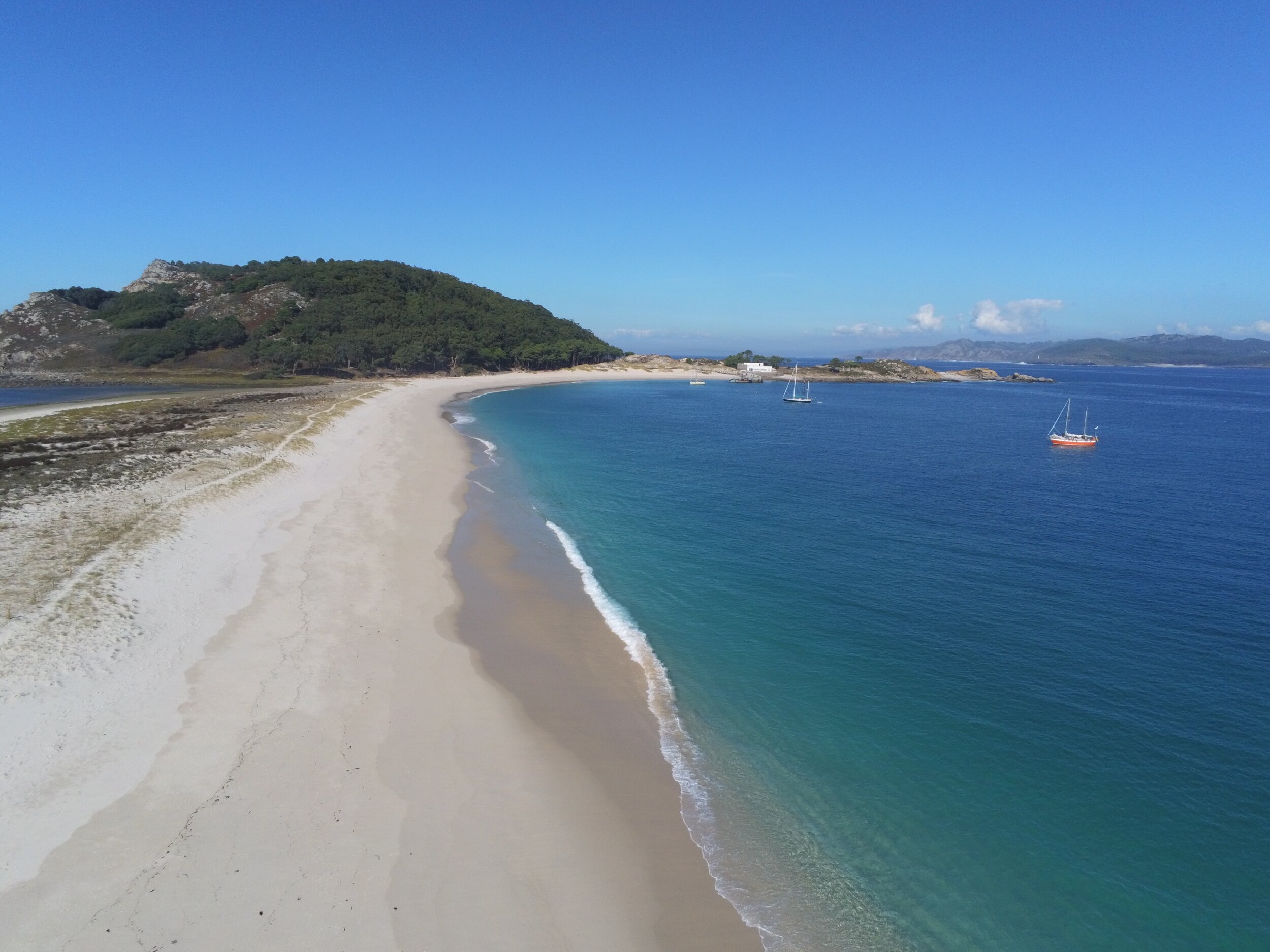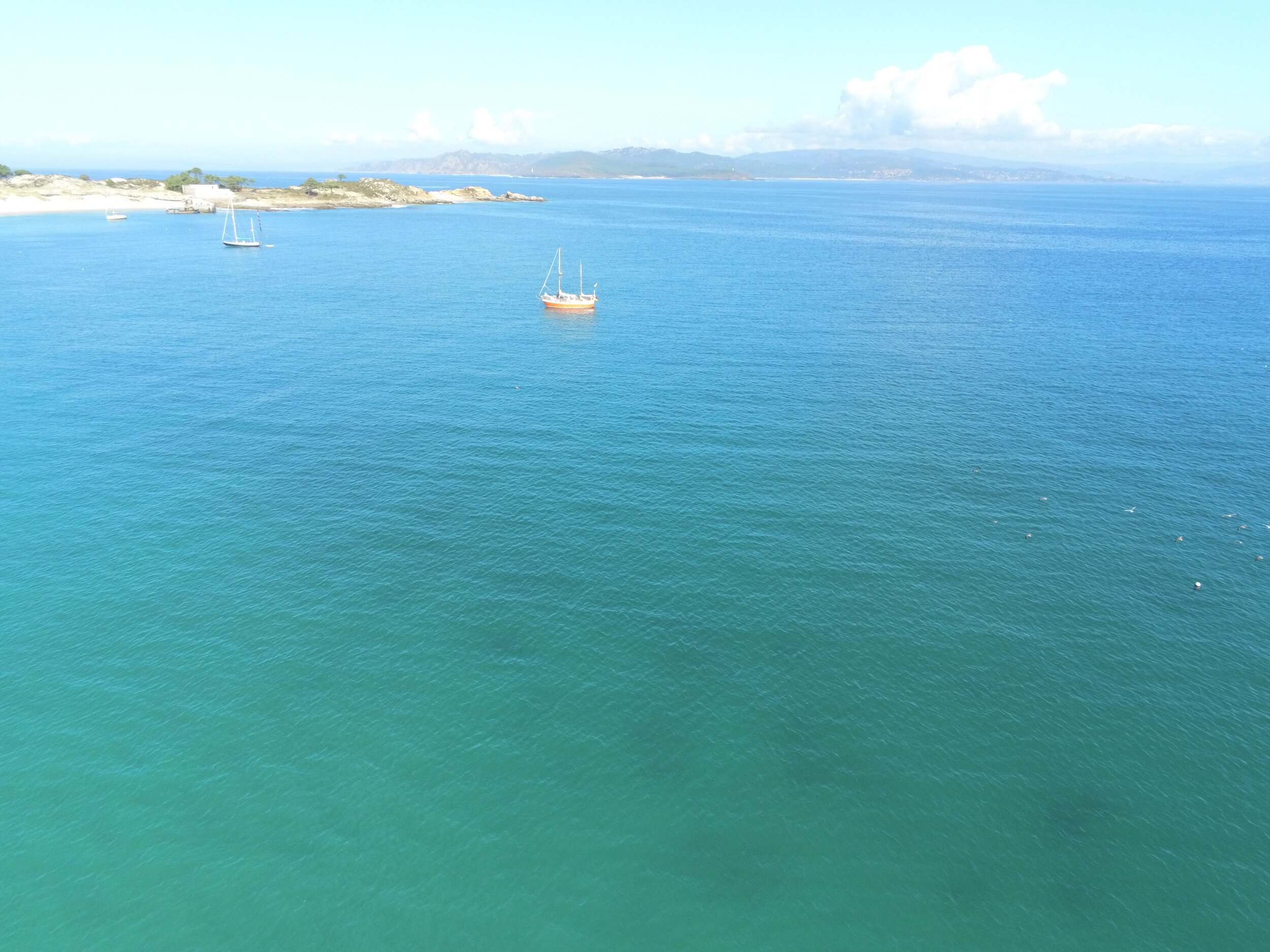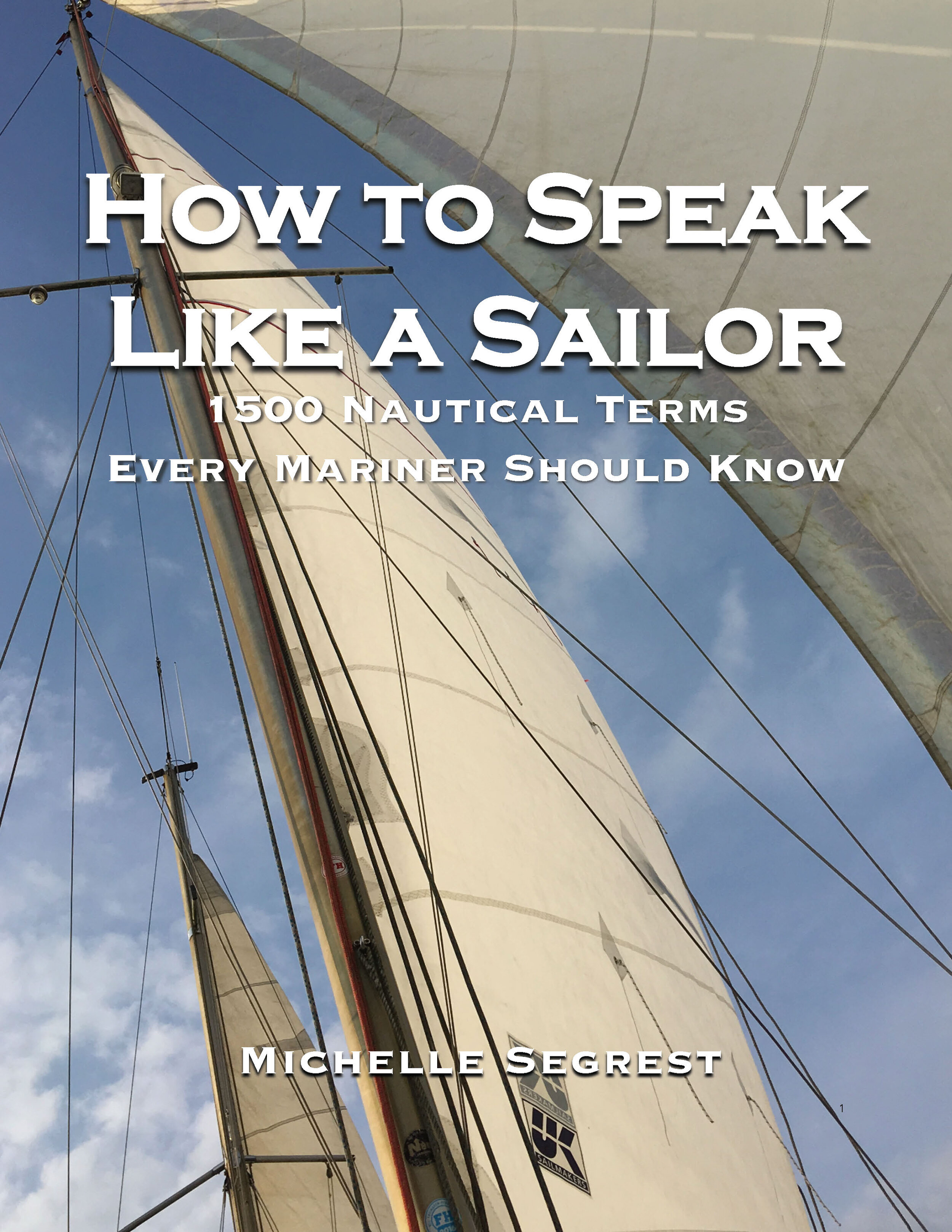Playa de Rodas - The Most Beautiful Beach in the World
/While sailing the Spanish Atlantic Coast, you won’t want to miss Playa de Rodas, considered by experts to be one of the most beautiful beaches in the world.
By Michelle Segrest — Travel Adventures from #myofficetoday
On our sailing voyage from Vigo, Spain to Porto, Portugal, we decided to take a little detour and check out Playa de Rodas, which is considered to be one of the most beautiful beaches in the world.
It did not disappoint.
Playa de Rodas is a slightly curved beach about 700 meters long on the Spanish Cies Islands, which is now a national park. The British newspaper, The Guardian, chose it as the most beautiful beach in the world in 2007.
We anchored about 50 meters from the shore and enjoyed the spectacular scenery! We didn’t have time to get out and explore the island, but we captured some amazing Drone footage and spectacular photos.




14 Fun Facts About the Cíes Islands
The Islas Cíes, or Cíes Islands, is a stunning archipelago only reachable by boat and home to one of the biggest seagull colonies in Europe.
Three islands, none of which is larger than 3km in length (about the width of Manhattan at its widest), and a few small islets overlook the bay of Vigo and the Atlantic Ocean. They feature deep cliffs, stunning sunsets, and incomparable beaches. The longest beach, Playa de Rodas, connects the two biggest islands – Faro and Monteagudo – via a sandy isthmus.
In addition to Figueras and Rodas—which feature clear, cold water, white sand, and all the warmth of the sun, there are seven other sand beaches all over the islands and islets, even one that is designated for nudists. The longest beach, Rodas, has a length of 1,200 meters, or around three quarters of a mile, making it prime beach walking territory.
4. The Cíes Islands have four different hiking routes. Three of them take visitors to a lighthouse and the other leads travelers to a sensational spot for sunset watching, Alto do Príncipe. These one to two mile-long hiking trails offer several bird observatories along the way, which are perfect for getting to know the islands’ avian denizens.
5. There’s no fresh water source at Cies Islands for tourists and the sun is wild there, so remember to bring your own water and food. You can buy some there, but there are only three places where you can buy them, and they will be expensive.
6. You need a special license for diving, but you can swim around and see an amazing collection of species. No fishing is allowed.
7. For most of the year, the islands’ only inhabitants are animals and the three park rangers who guard it. Birds are the islands’ kings. Seagulls and cormorants can be seen everywhere flying over the islands and fishing on the waters. It is the perfect rest spot for migrating flocks.
8. Under the sea, more than 200 types of seaweed populate this national park. In fact, 85 percent of the park is marine, with mussels, barnacles, crabs, eels, octopus, clams, and scallops, among other sea life, calling this underwater habitat their home. On the surface, pines and eucalyptus populate the highest parts of the islands, and the toxo – a type of regional gorse – covers the lowlands.
9. A former refuge for pirates, the park can only be visited during the summer, and just 2,200 people are allowed on the island per day, most of them leaving on the evening boats. Since there are no trash cans, all visitors must pocket their trash and take it back to the mainland when they leave.
10. Visit the small museum located at Faro island.
11. On Easter weekend and from June to September, the camping sites are open to guests. Visitors can bring their own tents or rent one offered by the island management, which comes with army-style cots. Only 800 people can camp each night, making the experience unique and the space never crowded.
12. The campsites are family friendly. The island has clean, hot water showers, bathroom facilities, and even laundry stations for hand-washing clothes. It is forbidden to have parties around the tents or to play music at night, meaning that the camping experience is pleasant for everybody.
13. Go snorkeling, kayaking or take a guided tour, just book in advance with the ferry company for the camping.
14. Two boat companies make the trip to Cíes Islands from three different locations on the Spanish coast. The fare is the same regardless of which company you choose: 16 euros on Easter and the weekends of June and September, and 18.50 euros for July and August. Once on the island, camping costs 8.50 euros for a tent, 8.50 euros per adult and 6.20 euros per child, during the high season.
If you like this page about the world’s most beautiful beach, Playa de Rodas, please PIN IT!
This page contains affiliate links. If you click on the product links and make a purchase, it allows me to make a small commission at no extra cost to you! Thank you for your support and I hope you find value in this content!




























